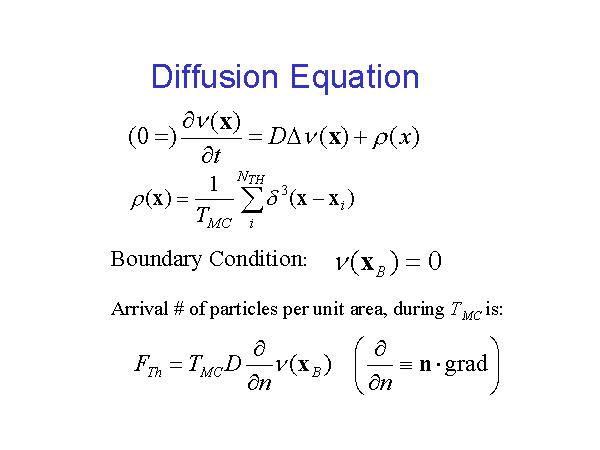






|

|
slide No. 5 / 12







|

|
slide No. 5 / 12
Here are some equations which govern our model.
The topmost is the Poisson's equation. Nu is a volume density of the particle, and D is a diffusion coefficient. We assume a steady state condition, so the time derivative is zero.
Roh is a source of the particle, and it can be written as this. We assume N_TH of particles are thermalized during the Monte Carlo step. Then source distribution can be written as a sum of the three dimensional delta-function. X_I is the thermalization point of the particle I.
T_MC is a time corresponding to the trial number of particles with Monte Carlo stage.
Well, if we can assume that the sticking coefficient at the chamber boundary is unity, the boundary condition for this equation is like this, Nu equals ZERO at boundary. Dirichret condition.
With these, arrival number of particles per unit area, during TMC can be written like this. Round/Round n means the normal component of particle flux, gradient of particle density, at chamber boundary.